By: Zachary Harmer B.Sc.; SoilOptix Inc.
As part of the SoilOptix® technology deliverable, soil texture layers are provided. This includes percentage of Clay, Sand and Silt (Figure 1). Additional layers may be derived from these properties however, which includes Loam (%), Leakability and Plant Available Water.
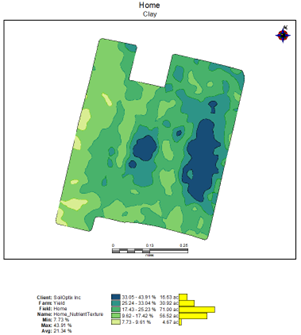
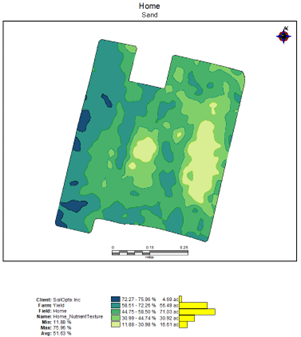
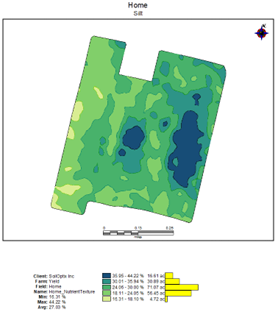
Figure 1: SoilOptix® layers: Percent of Clay, Sand & Silt
Loam
SoilOptix® determines the Loam layer through a simple addition of Clay + Silt. Its units continue through and is represented as a percentage. An example of this map is shown below in Figure 2.

Figure 2: SoilOptix® Loam Layer
Leakability & Plant Available Water
These two custom layers involve Organic Matter, Clay and Silt and act as index layers (i.e. unitless). Leakability is an index of the potential for water to move through a given soil and acts as an inverse to Plant Available Water. The lower Leakability value, results in more likely water to leach through the soil, relative to other parts of the field. As an example, sand fields can have very low values for Leakability, resulting in the high movement of water in that soil.
Alternatively, Plant Available Water acts as a basic water retention model, where as PAWater increases these areas will hold more water. It is possible for this value to go over 100, indicating higher clay content and higher organic matter levels.
An example of each of these layers is shown below in Figure 3.
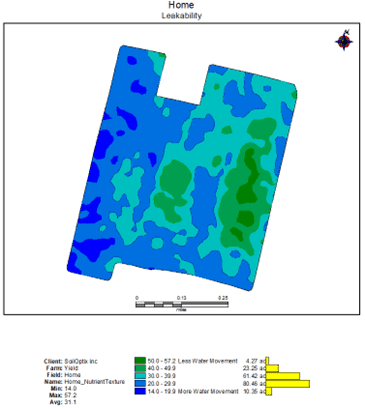
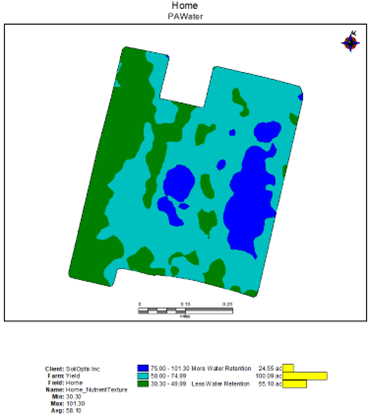
Figure 3: SoilOptix® Leakability & Plant Available Water Layers
The differences across various levels of Leakability and Plant Available Water are based on ranges of Organic Matter, and texture. The table below illustrates how these changes affect the index values of these custom properties.
| OM | Sand | Silt | Clay | Leakability | PAW | ||
| Low OM | 1 | Low Silt/Clay | 90 | 5 | 5 | 8 | 13 |
| Low OM | 1 | Medium Silt/Clay | 60 | 20 | 20 | 23 | 43 |
| Low OM | 1 | High Silt/Clay | 10 | 45 | 45 | 48 | 93 |
| Low OM | 1 | High Silt/Low Clay | 5 | 90 | 5 | 8 | 98 |
| Low OM | 1 | Low Silt/High Clay | 5 | 5 | 90 | 93 | 98 |
| Medium OM | 3 | Low Silt/Clay | 90 | 5 | 5 | 14 | 19 |
| Medium OM | 3 | Medium Silt/Clay | 60 | 20 | 20 | 29 | 49 |
| Medium OM | 3 | High Silt/Clay | 10 | 45 | 45 | 54 | 99 |
| Medium OM | 3 | High Silt/Low Clay | 5 | 90 | 5 | 14 | 104 |
| Medium OM | 3 | Low Silt/High Clay | 5 | 5 | 90 | 99 | 104 |
| High OM | 10 | Low Silt/Clay | 90 | 5 | 5 | 35 | 40 |
| High OM | 10 | Medium Silt/Clay | 60 | 20 | 20 | 50 | 70 |
| High OM | 10 | High Silt/Clay | 10 | 45 | 45 | 75 | 120 |
| High OM | 10 | High Silt/Low Clay | 5 | 90 | 5 | 35 | 125 |
| High OM | 10 | Low Silt/High Clay | 5 | 5 | 90 | 120 | 125 |
Conclusion
These custom properties further extend the possibilities of the textural and physical properties which are reported from standard lab procedures. The utilization of these properties extends to the knowledge of the user; however, applications may include variable rate seeding scripts, irrigation management or combining with other precision agriculture datasets (e.g. normalized yield data).
